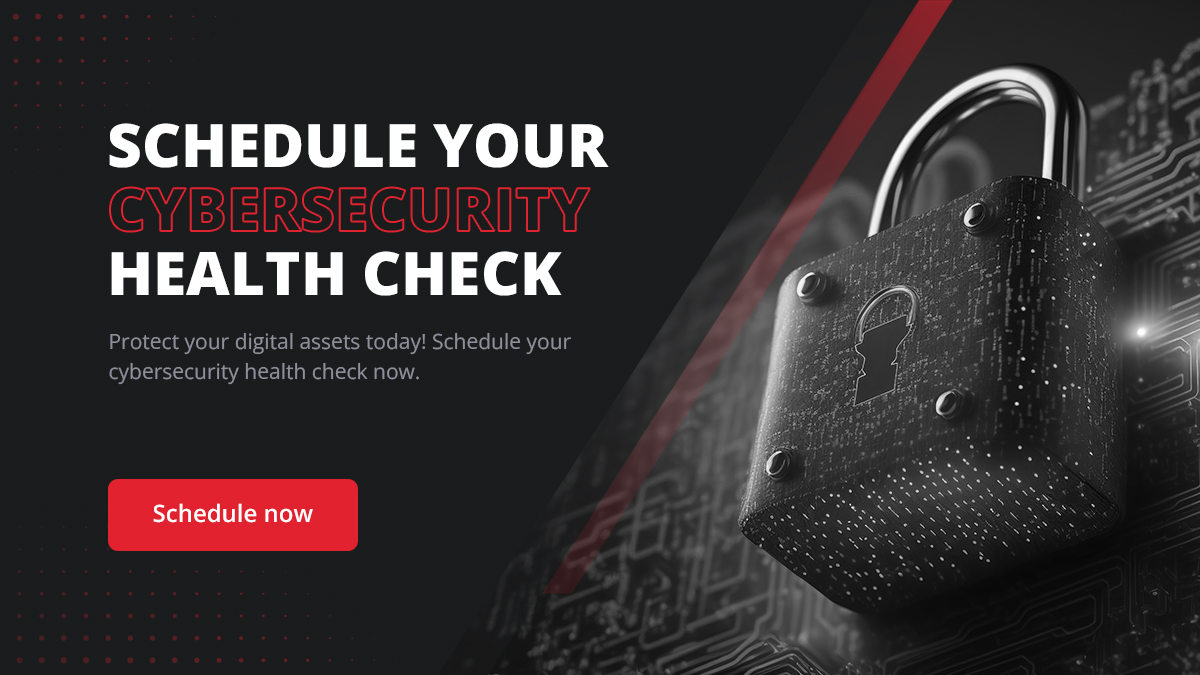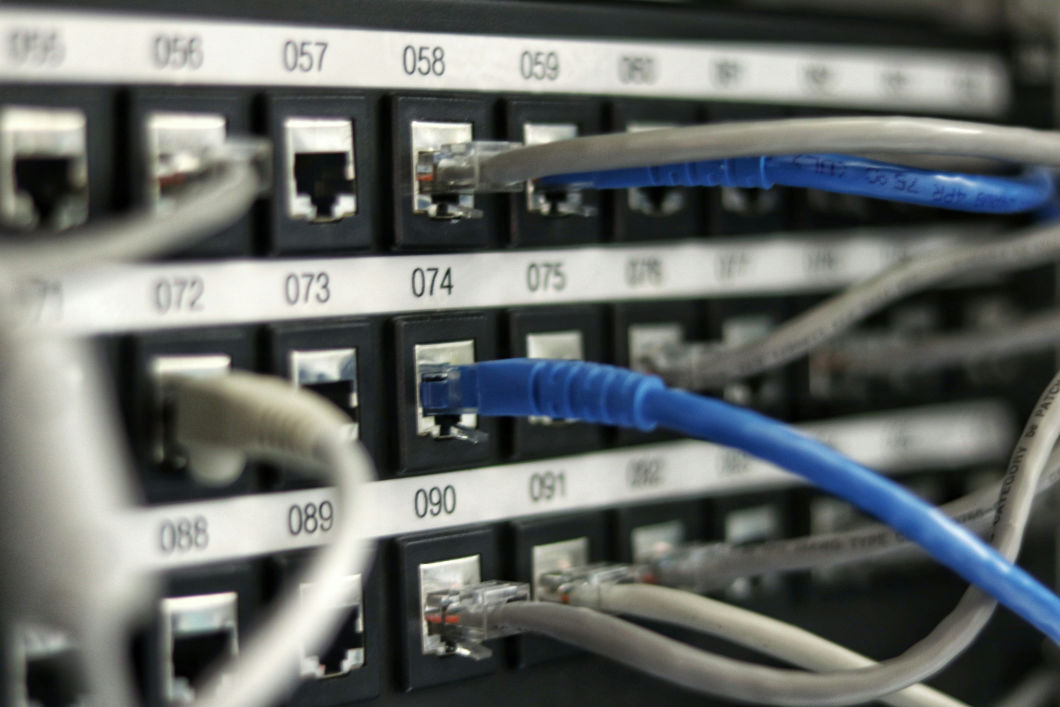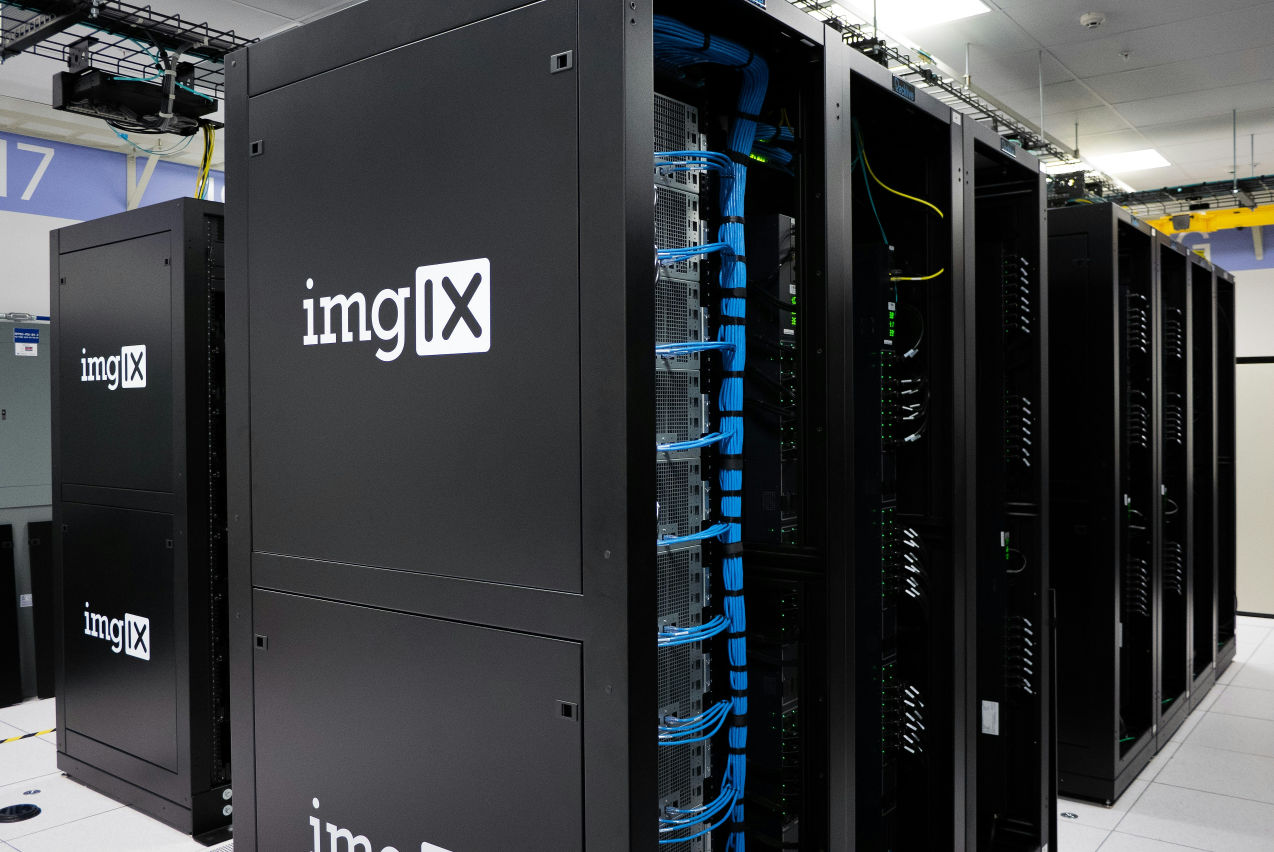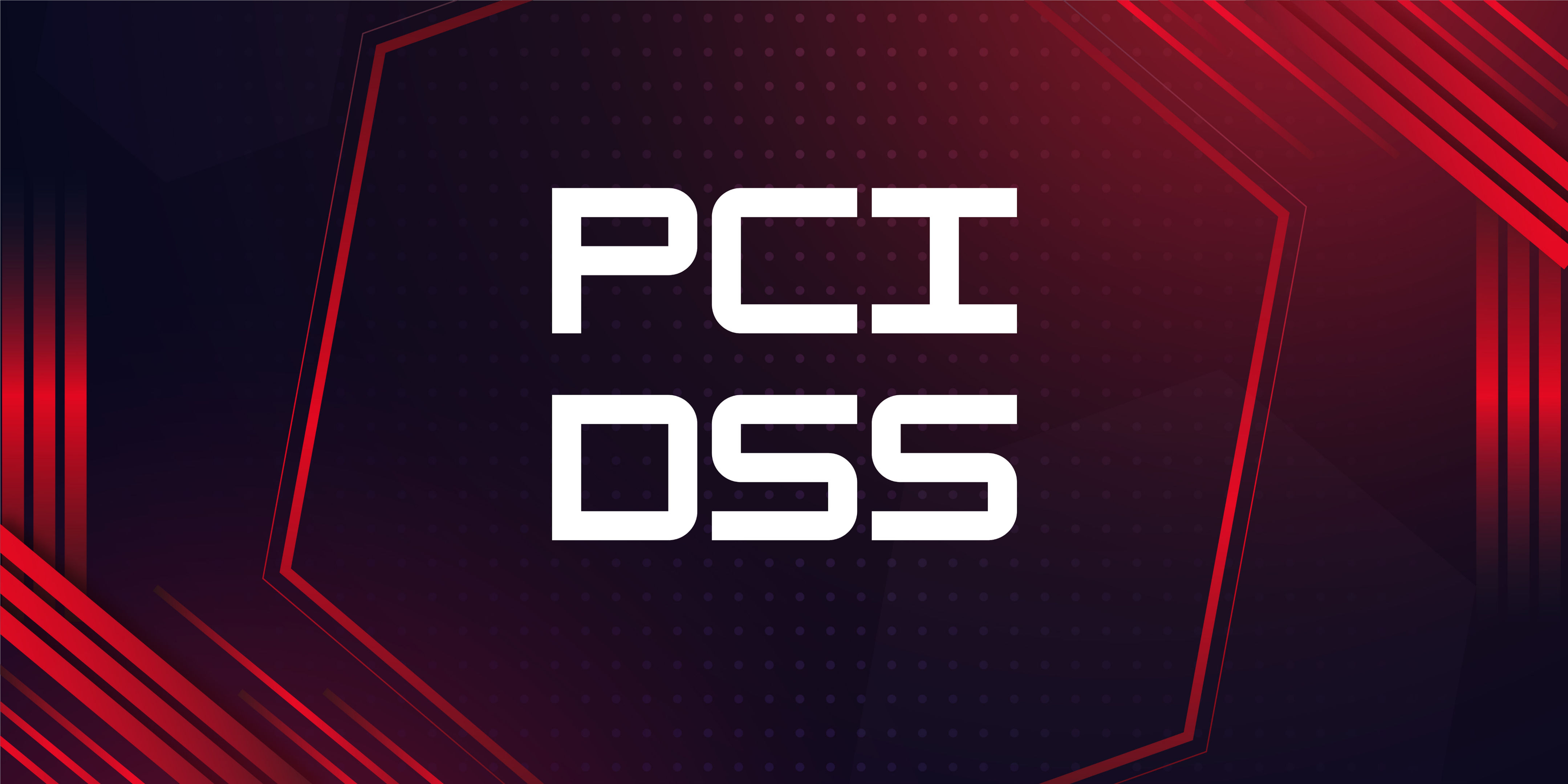Secure Your Network with Gateway Security Solutions

What is Gateway Security?
Similar to Castle Defense Systems, Security Gateway is pivotal in defending against cyber threats, ensuring that only safe and authorized data enters and exits a network. Protecting network infrastructure is crucial for businesses and individuals alike. Gateway security is pivotal in defending against cyber threats, ensuring that only safe and authorized data enters and exits a network. This segment of cybersecurity is both comprehensive and vital for maintaining the integrity and confidentiality of data transmitted across networks.
Definition of Gateway Security
It refers to the measures and technologies designed to protect networks at their entry points, or "gateways." These gateways are the primary interface for exchanging data between networks or the internet. Gateway security solutions typically include firewalls, intrusion detection systems (IDS), intrusion prevention systems (IPS), antivirus programs, and other threat prevention technologies. These tools filter out unauthorized access and malicious traffic, thus safeguarding the network and its data.
Difference between a Security Gateway and other security options
Understanding the distinction between a security gateway and other security measures is crucial for implementing effective network protection strategies. While the terms "security gateway" and "firewall" are often used interchangeably, there are significant differences in their functionality and scope:
- Security Gateway: A security gateway encompasses a broader range of functions compared to traditional firewalls. It includes integrating antivirus, anti-spam, VPN, and content filtering capabilities. Security gateways are designed to perform deep packet inspection (DPI), examining the data within the packet itself, allowing for more robust security measures that can detect and block sophisticated attacks before they enter the network.
- Firewalls: Typically, a firewall acts as a barrier that controls traffic flow between networks based on predetermined security rules. While blocking unauthorized access based on IP addresses and port numbers is effective, standard firewalls may not perform the content inspection necessary to catch more advanced threats that a security gateway can address.
- Other Security Options: Other network security elements, such as endpoint protection, deal with individual devices within the network rather than focusing on the network entry points. These include anti-malware software, data encryption, and security patches, which are critical but handle different aspects of security that are not covered by gateways.
Importance of Security Gateway
The significance of security gateways in network security cannot be overstated. As the first line of defense, security gateways protect the network by monitoring and controlling the data that enters and leaves through these crucial transit points. This protection is essential in preventing unauthorized access and data breaches, which can lead to significant financial losses and damage to an organization's reputation. By integrating advanced security measures such as deep packet inspection, intrusion prevention systems, and comprehensive malware detection, security gateways offer a more robust defense than traditional firewalls.
They can detect and mitigate complex threats that might bypass simpler security solutions. Additionally, security gateways provide detailed logging and reporting functionalities, which are vital for compliance with data protection regulations and for conducting thorough security audits.
How does a Security Gateway work?
A security gateway operates by scrutinizing all data packets entering and leaving a network, employing a variety of security mechanisms to ensure that only safe, authorized traffic can pass through. It acts as a multifunctional device combining several security features into a single, cohesive system. The primary components often include a firewall, antivirus, anti-spam, VPN, and intrusion prevention systems (IPS). When data packets arrive at the gateway, they undergo a process called deep packet inspection (DPI). DPI allows the security gateway to analyze not just the headers but the actual content of the packets, looking for malicious code or suspicious anomalies that could indicate a cyber threat.
After inspection, the security gateway applies a set of predefined security policies that determine whether the packets should be allowed through, quarantined, or blocked entirely. These policies are established based on the network’s security requirements and can be adjusted to address changing threat landscapes. The security gateway also encrypts data to ensure privacy and integrity as it moves in and out of the network, making it essential for organizations that transmit sensitive information. In addition to active threat prevention, security gateways also provide detailed logging and reporting capabilities that help in auditing and compliance processes, improving overall network visibility and security management.
Why do you need a Security Gateway?
They are essential for protecting a network’s data integrity and securing digital assets from various cyber threats. In today’s interconnected world, where data breaches are costly and can cause irreparable damage to a company’s reputation, robust network security is imperative. Security gateways offer several key benefits:
- Comprehensive Security: Unlike traditional firewalls that only filter traffic based on protocols and ports, security gateways provide multiple layers of security including firewall, antivirus, anti-spam, and intrusion prevention, offering a more thorough and dynamic approach to cyber defense.
- Advanced Threat Detection: With capabilities like deep packet inspection, security gateways can identify and mitigate sophisticated attacks that conventional methods might miss. They can detect malware hidden deep within packet payloads, providing an advanced level of threat detection.
- Regulatory Compliance: Many industries are subject to stringent data protection regulations that require robust security measures. Security gateways help organizations comply with these regulations by providing secure, encrypted communications and detailed logging of data access and transmission.
- Enhanced Performance: Modern security gateways are designed not only to secure but also to optimize network performance. They can intelligently manage bandwidth, prioritize network traffic, and reduce latency, thereby enhancing the overall user experience.
- Scalability: As organizations grow, their network security needs become more complex. Security gateways are scalable solutions that can expand to accommodate increased traffic and more sophisticated security requirements without compromising performance.

Hardware-based and Software-based Gateway Security Solutions
In gateway security, solutions can broadly be categorized into hardware-based and software-based systems. Each type offers distinct advantages and caters to different security needs depending on the organizational structure and its security requirements.
Hardware-based Gateway Security Solutions
These solutions consist of physical devices installed at the network perimeter to monitor and control the traffic entering and leaving. These devices, often referred to as hardware firewalls or security appliances, are built with dedicated processing power to handle security functions without impacting the performance of other network resources. They are particularly effective in environments where high throughput and reliability are critical, such as in large enterprises or data centers.
The primary benefits of hardware-based solutions include:
- Performance: Since these devices are designed specifically for security tasks, they can process a large volume of data at high speeds with minimal latency, making them suitable for networks with heavy traffic.
- Reliability: Hardware solutions are generally more robust and less susceptible to crashes than software-based systems, providing consistent protection even under heavy loads.
- Physical Security: Being a physical device, hardware solutions also offer a level of tamper resistance that software solutions cannot match.
However, hardware solutions can be more expensive both in terms of initial setup and ongoing maintenance. They may also lack the flexibility of software solutions, as upgrading hardware typically involves physical replacement or the addition of new devices.
Software-based Gateway Security Solutions
On the other hand, software-based gateway security solutions involve installing security software on general-purpose hardware or within virtual environments. This solution is highly flexible and can be updated or modified quickly to respond to new threats. Software solutions are ideal for organizations requiring scalable, dynamic security measures or operating in highly virtualized environments.
Advantages of software-based gateway security solutions include:
- Flexibility: Software solutions can be easily updated with new features and threat definitions, allowing organizations to stay current with the latest security technologies.
- Cost-Effectiveness: They are generally less expensive to implement and maintain than hardware solutions, as they can run on existing hardware and be scaled up using additional virtual resources without significant physical infrastructure investments.
- Customization: Software-based solutions offer greater customization options, which can be tailored to meet specific security needs or integrate seamlessly with other software systems within the organization.
However, these solutions might consume more system resources and could potentially affect the performance of other applications running on the same hardware. They may also require more frequent updates and management to maintain high levels of security.
Types of Gateway Security Solutions
Gateway security encompasses a variety of solutions, each designed to address specific aspects of network security. Understanding the different types and their functionalities helps organizations tailor their security infrastructure to better protect against evolving cyber threats. Here’s an overview of some of the key types of gateway security solutions.
Firewall
They are the fundamental components of gateway security, acting as a barrier between a trusted internal network and untrusted external networks, such as the Internet. Firewalls enforce security policies by monitoring incoming and outgoing network traffic and permitting or blocking data packets based on predetermined security rules. Modern firewalls can handle complex datasets and are adept at distinguishing legitimate from malicious traffic based on port, protocol, IP address, and content, ensuring that unauthorized access is prevented while legitimate traffic flows smoothly.
Intrusion Detection Systems (IDS)
These systems are designed to detect unauthorized access or anomalous behavior on a network. IDS solutions monitor network traffic to identify suspicious activity by comparing traffic patterns against a database of known attack signatures. If an intrusion is detected, the system alerts network administrators so they can take immediate action. IDS solutions are crucial for identifying potential threats before they can cause harm, providing a layer of security that complements and enhances traditional firewall protections.
Intrusion Prevention Systems (IPS)
On the other hand, Intrusion Prevention Systems (IPS) build upon the capabilities of IDS by not only detecting potential threats but also taking preemptive actions to prevent the threat from causing damage. IPS solutions actively analyze network traffic and can automatically block attacks from reaching their targets. By integrating directly into the network infrastructure, IPS can effectively stop attacks in real-time, thereby providing a proactive security measure that mitigates risks associated with cyber threats.
Unified Threat Management (UTM)
A UTM device typically combines the functions of a firewall, IDS, IPS, anti-virus, anti-spam, VPN, and content filtering. Unified Threat Management (UTM) systems offer comprehensive security solutions that integrate multiple security features into a single platform. This all-in-one approach simplifies security management and reduces the complexity of maintaining multiple separate devices. UTMs are particularly beneficial for small to medium-sized businesses that require robust security capabilities but have limited IT resources and personnel.
%20Gateways.jpeg)
Virtual Private Network (VPN) Gateways
They are used to create secure connections over the internet, allowing for the safe transmission of data across networks. By encrypting data at the sending end and decrypting it at the receiving end, VPN gateways ensure that information remains confidential and protected from interception. They are essential for organizations that rely on remote access capabilities, as they provide secure communication channels for remote workers to access corporate resources as if they were directly connected to the private network.
Secure Web Gateway (SWG)
SWGs enforce company policies on web access, blocking malicious websites and avoiding the download of dangerous files. A Secure Web Gateway (SWG) is a critical security solution that provides real-time web traffic monitoring and management to prevent exposure to cyber threats. They also typically offer URL filtering, malicious content detection, and application control capabilities. By inspecting web traffic, including encrypted HTTPS traffic, SWGs help prevent data breaches, phishing attacks, and other web-based threats.
Email Security Gateways
These gateways scan incoming and outgoing emails to detect spam, phishing attempts, malware, and other harmful content. They use various techniques, including signature-based detection, anomaly detection, and heuristic analysis to identify threats. Email security gateways also often include data loss prevention (DLP) capabilities to monitor and control sensitive information sent via email, thereby preventing data leaks.
Secure email gateways usually provide security for multiple users, with a host of features such as content filtering, malware protection, and encryption working together to prevent email-based security risks.
Data Loss Prevention (DLP) Systems
These systems focus on detecting and preventing data breaches, data exfiltration, and unauthorized use within an organization. DLP solutions monitor, detect, and block sensitive data while in use (endpoint actions), in motion (network traffic), and at rest (data storage) based on policy settings. By ensuring that sensitive data does not leave the network without authorization, DLP systems play a crucial role in complying with regulatory requirements and protecting intellectual property.
Next-Generation Firewalls (NGFW)
These types of Firewalls (NGFW) extend the capabilities of traditional firewalls with more advanced features such as integrated intrusion prevention, application awareness and control, and cloud-delivered threat intelligence. NGFWs are designed to provide deeper inspection capabilities beyond port and protocol analysis, allowing them to understand the applications being used on a network, enforce security policies at the application level, and detect application-layer attacks. They are an integral component of modern network security strategies.
Cloud Access Security Brokers (CASB)
CASBs are security enforcement points between cloud service consumers and providers to enforce security policies. CASBs give organizations visibility into their cloud application usage, protect sensitive information across cloud services, and secure access to cloud environments. They manage and enforce security policies related to access control, threat prevention, data security, and compliance across a multitude of cloud services.
Zero Trust Solutions
These solutions embody a security concept and architectural framework that dictates that organizations should not automatically trust anything inside or outside their perimeters. Instead, they must verify everything trying to connect to their systems before granting access. Zero Trust solutions often involve identity verification, micro-segmentation of network resources, and least privilege access control. This approach minimizes the attack surface by limiting user and device access to network resources strictly to what is necessary for specific tasks, significantly enhancing overall security posture.
Implementing Gateway Security Solutions
This process involves several key steps, from assessing network requirements to configuring specific security technologies. Here’s a detailed look at how to approach the implementation of gateway security solutions in an organizational context.
Assess Network Requirements and Security Risks
The first step in implementing gateway security is to assess the specific needs and vulnerabilities of the organization's network. This assessment should include an analysis of network architecture, data flow, critical assets, and potential threat vectors. It's important to identify which assets are most valuable and at risk, and what types of threats are most likely to target the organization. This comprehensive assessment helps understand the scope and requirements of the necessary security measures and lays the groundwork for selecting appropriate security technologies.
Select Appropriate Gateway Security Technologies
Based on the initial security risk assessment, organizations must select the gateway security technologies that best fit their specific needs. This selection should address identified vulnerabilities and align with the organization's security goals. It may include a combination of different technologies such as firewalls, intrusion detection systems (IDS), intrusion prevention systems (IPS), secure web gateways (SWG), and more. Each selected technology should complement the others to create a layered defense strategy.
Choose Hardware and Software Vendors
Choosing the right vendors is critical to the success of implementing gateway security solutions. Factors to consider include the vendor’s reputation, the robustness of their security solutions, compatibility with existing IT infrastructure, and the level of customer support offered. It’s also advisable to consider the scalability of the solutions, as the security needs may grow or change over time. Performing due diligence on potential vendors and their offerings can help ensure that the organization receives the best security capabilities and ongoing support.
Develop a Comprehensive Security Policy
To guide the deployment and operation of gateway security technologies, a comprehensive security policy is fundamental. This policy should outline specific security procedures, user responsibilities, and protocols for managing and responding to security incidents. The policy should be clearly communicated to all employees and should include guidelines on internet usage, access controls, data handling, and more. Regular updates and training on the security policy are essential to keep up with evolving cyber threats and changes in the organization.
Configure Firewall and Intrusion Prevention Systems
The technical setup of gateway security solutions involves detailed configuration of firewalls and intrusion prevention systems to enforce the organization's security policies effectively. This includes setting up firewall rules that specify allowed and blocked traffic, configuring IPS signatures to detect and prevent attacks, and ensuring that all security systems are optimized for performance and security. Proper configuration should also involve regular updates and patches to address new vulnerabilities and enhance functionality.
Integrate Antivirus and Anti-Malware Software
This software should be part of a multi-layered security approach at the gateway level, scanning all incoming and outgoing data. Effective integration involves automatic and continuous updates to virus definitions and malware signatures, ensuring that protection measures keep pace with evolving cyber threats. Additionally, configuring the software to conduct real-time and scheduled deep scans will help maintain robust security without significantly impacting system performance.

Set Up Secure VPN Access for Remote Users
With the rise of remote work, secure VPN access has become necessary to ensure that remote connections to the network are protected. VPN gateways encrypt internet traffic, creating a secure tunnel for data to transit between remote users and the network. Setting up a VPN involves selecting a protocol that balances speed and security, such as OpenVPN or WireGuard, and implementing strong authentication methods to verify users’ identities before granting access. This setup ensures that remote connections are as secure as those within the physical office, protecting the network from potential entry points for attackers.
Implement Security Information and Event Management (SIEM) Systems
SIEM technology aggregates and analyzes log data from across the network, providing real-time monitoring and incident response capabilities. SIEM systems are vital for a comprehensive security strategy. Implementing SIEM helps detect anomalies, identify potential threats, and enable swift remedial actions. For effective SIEM implementation, organizations should ensure it is configured to collect relevant data from all devices and applications across the network and set up alerts for suspicious activities that could indicate security incidents.
Conduct Regular Security Audits and Penetration Testing
Regular security audits and penetration testing are crucial for maintaining the integrity of gateway security implementations. Security audits involve thoroughly reviewing all security policies, systems, and controls to ensure they meet the required security standards and best practices. Penetration testing, conversely, simulates cyber-attacks on the network to identify vulnerabilities before malicious actors can exploit them. Conducting these tests regularly helps uncover potential weaknesses in the network’s security posture and provides insights into areas that require enhancement or immediate attention.
Train Staff on Security Best Practices
One of the most important elements in maintaining network security is ensuring all staff are trained on security best practices. This training should cover topics such as recognizing phishing attempts, managing passwords securely, and understanding the importance of regular software updates. Additionally, staff should be informed about the specific security policies and tools in place within the organization. Regular training sessions help keep security at the forefront of employees' minds and reduce the risk of security breaches caused by human error.
Update and Patch Systems Regularly
Keeping software and systems up to date is crucial in defending against vulnerabilities that could be exploited by attackers. This includes security software, operating systems, and applications used throughout the organization. Regular patch management ensures that any security holes are addressed as soon as fixes are available, significantly reducing the window of opportunity for attackers. Automating the update process can help maintain consistency and ensure no critical updates are overlooked.
Monitor Network Traffic and Alerts Continuously
Continuous monitoring of network traffic and security alerts is vital for early detection of potential security incidents. This involves using tools that can analyze traffic patterns and alert administrators to unusual activities that could indicate a breach or an attempted attack. Effective monitoring requires setting up the right filters and thresholds to distinguish between normal operations and potential threats. This real-time surveillance allows for quick responses to threats, minimizing potential damage.
Evaluate and Adjust Policies and Defenses Based on Threat Evolution
Cyber threats constantly evolve, so security measures and policies must adapt accordingly. Regularly reviewing and updating security policies ensures they remain effective against new attacks. This process should include an analysis of recent security incidents, both within the organization and across the industry, to identify trends and potential areas for improvement. Adjusting defenses might involve enhancing firewall rules, changing intrusion detection parameters, or adopting new security technologies that address emerging threats.
Challenges and Considerations in Gateway Security
Implementing and maintaining effective gateway security involves navigating a range of challenges that can impact an organization's operations and security posture. These challenges require careful consideration and strategic planning to ensure that security measures enhance, rather than hinder, network performance and business functionality. Here are some key challenges and considerations to keep in mind:
Balancing Security and Network Performance
One of the primary challenges in gateway security is balancing robust security measures with the need for optimal network performance. Security devices and software, especially those that perform intensive tasks like deep packet inspection and real-time monitoring, can significantly slow down network speeds. To mitigate this, organizations must carefully configure security settings to maximize efficiency and minimize latency. This might involve selectively applying security measures to high-risk traffic or optimizing hardware and software configurations. The goal is to ensure that security measures do not impede user experience or business operations, while still protecting the network from threats.
Managing Advanced Persistent Threats (APTs)
APTs typically involve attackers gaining access to a network and remaining undetected for long periods, allowing them to steal sensitive data or cause widespread damage. Advanced Persistent Threats (APTs) pose a significant challenge due to their targeted, sophisticated, and sustained nature. To manage APTs, organizations need a layered security approach that includes gateway security solutions and internal monitoring and response strategies. This requires a combination of advanced detection technologies, regular system audits, strong endpoint protection, and ongoing training for staff to recognize signs of a breach. Managing APTs effectively also involves understanding the specific tactics, techniques, and procedures (TTPs) used by attackers, which requires continuous learning and adaptation of security strategies.
Handling Zero-Day Attacks
These attacks are particularly challenging because there are no existing patches or signatures that can be used to detect and mitigate them. Zero-day attacks exploit vulnerabilities unknown to software vendors or security professionals at the time of the attack. To handle zero-day attacks, organizations must employ proactive and predictive security measures. These include deploying advanced threat detection systems that use behavioral analysis to detect unusual activity that might indicate an exploit. Additionally, implementing rigorous security practices such as the principle of least privilege and segmenting networks can limit the damage caused by zero-day exploits. Regularly updating and patching software as soon as updates are available is also crucial, as it reduces the window of vulnerability once a zero-day is disclosed and patched.
Ensuring Compliance with Data Protection Regulations
Gateway security plays a pivotal role in compliance by protecting sensitive data as it enters and exits the network. Compliance with data protection regulations such as GDPR, HIPAA, or CCPA is a significant challenge for organizations. Organizations must ensure that their gateway security solutions can effectively log and monitor data transfers and access, provide necessary encryption, and enforce policies that comply with legal standards. The complexity of these requirements can vary greatly depending on the geographic location and industry, making it essential for organizations to continuously update their security practices and systems in alignment with changing regulations.

Integrating with Cloud Services and Infrastructure
As more organizations move to cloud-based services and infrastructure, integrating gateway security solutions with the cloud becomes increasingly complex. Cloud environments often require different security approaches compared to traditional on-premises setups. For example, the dynamic nature of cloud services, with their scalable and elastic capabilities, poses unique challenges for maintaining perimeter security. Organizations must adapt their gateway security strategies to manage data across multiple cloud platforms and services, ensuring consistent security policies and visibility across all environments.
Scaling Security Measures for Organizational Growth
As companies expand, they often experience increased network traffic, add new locations, and integrate more third-party services into their operations. Therefore, organizational growth can significantly complicate gateway security. Each of these factors can introduce new vulnerabilities and require expanded security measures. Gateway security solutions must, therefore be scalable to accommodate increased capacity and flexible enough to protect diverse environments and technologies. Planning for growth involves not only upgrading hardware and software but also ensuring that security policies and procedures are standardized and enforced across all parts of the organization.
Keeping Up with Rapid Technological Changes
The rapid pace of technological innovation presents another major challenge in gateway security. New technologies can introduce unforeseen vulnerabilities, making networks susceptible to new attacks. Furthermore, cybercriminals are quick to exploit technological advancements for malicious purposes. To keep up, organizations must ensure that their gateway security measures are equally agile. This involves regular updates to security protocols, continuous training for security personnel, and the adoption of advanced security technologies such as artificial intelligence and machine learning for predictive threat detection and response.
Deploying Gateway Security in Various Environments
Implementing gateway security effectively requires understanding the distinct needs of different organizational sizes and structures. Both enterprise networks and small to mid-sized enterprise businesses have unique challenges that influence their security strategies. Below, we discuss how gateway security can be adapted to meet the needs of these diverse environments.
Gateway Security for Enterprise Networks
Enterprise networks are often extensive and complex, encompassing multiple locations and handling large volumes of sensitive data. These environments require robust, scalable gateway security solutions that address various threats and compliance requirements. Key elements of gateway security for enterprise networks include:
- Advanced Threat Protection: Enterprises require sophisticated threat management systems integrating technologies such as intrusion prevention systems (IPS), advanced malware protection, and deep packet inspection. These systems need to be capable of analyzing vast amounts of data to detect and respond to threats in real time.
- High Availability and Redundancy: To ensure continuous operation and minimize downtime, enterprise networks must implement redundant security systems. This often involves setting up multiple security gateways in a clustered or failover configuration to provide service continuity in case one gateway fails.
- Network Segmentation: Effective network segmentation is critical in large organizations to contain breaches and limit the spread of threats. Segmenting the network allows enterprises to apply security policies more granary and isolate critical data and systems from general network access.
- Regulatory Compliance: Enterprises frequently face strict regulatory requirements that dictate how data must be handled and protected. Gateway security solutions for enterprises should include comprehensive logging, monitoring, and reporting features to help maintain compliance with these regulations.
Solutions for Small to Mid-Sized Enterprise Businesses
Small and medium businesses (SMBs), while generally less complex than large enterprises, still require effective gateway security to protect against cyber threats. However, their solutions must be cost-effective and manageable given typically smaller IT budgets and teams. Key strategies for SMBs include:
- Unified Threat Management (UTM): UTM devices are particularly beneficial for SMBs because they combine multiple security functions, such as firewall, antivirus, anti-spam, and VPN, into one device. This not only simplifies management and reduces the need for multiple appliances but also helps in keeping costs down.
- Cloud-Based Security Solutions: Many SMBs can benefit from cloud-based security services, which reduce the need for in-house infrastructure and provide scalability to adapt to business growth or fluctuating demands. These services typically include automatic updates and upgrades, ensuring up-to-date protection against new threats.
- Simplified Management: SMBs often have limited IT resources, making it important for security solutions to be easy to deploy and manage. Vendors that offer solutions with intuitive interfaces and automated processes can help SMBs maintain effective security with minimal technical overhead.
- Flexible and Scalable Solutions: As SMBs grow, their security needs can change. Flexible, scalable security solutions that can grow with the business are essential. This might include the ability to easily add more advanced features or increase throughput capacity as network demands grow.
Let RedZone Technologies Manage the Right Security Gateway for you
RedZone Technologies specializes in delivering top-tier gateway security solutions tailored to meet the needs of businesses across various industries. With a focus on compliance, robust partnerships, and cutting-edge technology, RedZone Technologies offers a comprehensive suite of services designed to fortify your network against the ever-evolving landscape of cyber threats. Here’s how we can assist your business in building a stronger, more resilient security posture.
Compliance Solutions
RedZone Technologies understands the importance of regulatory compliance in maintaining trust and ensuring the legal operation of your business. We offer tailored compliance solutions that address the specific requirements of various regulatory frameworks, such as CMMC, GDPR, HIPAA, PCI-DSS, ISO and more. This includes IT Assessment Services and testing everything from network infrastructure and applications to end-user behavior and physical security measures. Our gateway security services include:
- Data Protection and Privacy: Implementing robust encryption and intrusion prevention systems to safeguard sensitive data.
- Audit and Reporting Tools: Providing detailed logging and reporting capabilities that help businesses monitor access and modifications to sensitive data, ensuring accountability and transparency.
- Policy Management: Assisting in developing and enforcing security policies that comply with regulatory standards, helping to minimize the risk of breaches and non-compliance penalties.
These solutions protect your data and ensure that your operations align with industry standards and legal requirements, reducing your risk and enhancing your company's reputation.
Key Partnerships
At RedZone Technologies, we believe in the power of collaboration to enhance security efficacy. We have established key partnerships with leading security technology providers, allowing us to offer state-of-the-art solutions at competitive prices. Our partners include renowned names in cybersecurity, who help us deliver:
- Advanced Security Technologies: Access the latest security innovations, from advanced threat protection systems to cutting-edge intrusion detection tools.
- Integrated Solutions: Seamless integration of various security technologies, ensuring that different components work together effectively to protect your network.
- Expertise and Support: Benefit from the collective expertise and support of RedZone Technologies and our partners, providing comprehensive assistance and guidance tailored to your needs.
These partnerships enhance our service offerings and ensure we can provide the most effective and up-to-date security solutions.
Featured Solutions
RedZone Technologies offers a range of featured solutions designed to meet the diverse needs of our clients. These include:
- Unified Threat Management (UTM): Our solutions consolidate multiple security functions into a single device, providing streamlined management and improved threat detection and response.
- Cloud Security: We provide robust security solutions that protect cloud-based infrastructures and applications, ensuring your data remains secure even in a cloud environment.
- Zero Trust Architecture: Implementing principles of least privilege and continuous verification across the network, our Zero Trust solutions ensure that security does not rely on perimeter defenses alone but is embedded throughout the digital environment.
- Virtual Security Operations: Our Virtual Security Operations offers expertly managed security services that monitor and protect your digital environment around the clock.
Each of these solutions is tailored to address the specific challenges modern businesses face, ensuring that your network is resilient against current and emerging threats.

FAQs
How often should gateway security systems be audited for vulnerabilities?
Regular audits of gateway security systems ensure they remain effective against new and evolving threats. The frequency of these audits can depend on several factors, including the network size, the sensitivity of the data handled, and the organization’s risk profile. However, as a general rule, conducting security audits at least annually is advisable. For environments facing higher risks or those subject to stringent regulatory requirements, conducting audits more frequently—such as biannually or quarterly—is recommended. Additionally, it's wise to perform an audit whenever significant changes are made to the network or after any major security incident to assess current security measures' effectiveness and identify any new vulnerabilities that might have emerged.
What are the implications of not updating gateway security systems promptly?
Failing to update gateway security systems promptly can have several serious implications for an organization. These include:
- Increased Vulnerability to Attacks: Security systems that are not updated regularly may lack the necessary defenses to protect against the latest threats and exploits. This can leave the organization vulnerable to malware infections, data breaches, and other cyberattacks.
- Compliance Issues: Many industries have regulatory requirements that mandate the use of up-to-date security measures. Not keeping security systems updated can result in non-compliance, leading to fines, legal issues, and damage to the organization’s reputation.
- Operational Disruptions: A successful cyberattack exploiting outdated security systems can disrupt operations, leading to downtime, loss of productivity, and potentially significant financial losses.
- Data Loss: Outdated security measures may fail to protect critical data effectively, resulting in data theft or loss that can have devastating consequences for the organization and its stakeholders.
How do gateway security systems handle unknown or zero-day threats?
Gateway security systems handle unknown or zero-day threats by employing advanced techniques that do not rely solely on known threat signatures. Instead, these systems use heuristic analysis, behavior monitoring, and artificial intelligence to detect unusual activity that could indicate a novel attack. Heuristic analysis involves rules or algorithms that assess the behavior of files and programs to spot suspicious patterns, while behavior monitoring tracks how applications and systems operate, flagging any actions that deviate from the norm, which could suggest a potential threat. Artificial intelligence and machine learning further enhance these capabilities by continuously learning from network behavior to better identify and respond to anomalies over time. This proactive approach allows gateway security systems to effectively identify and mitigate threats even before specific signatures are developed.
What are the implications of IoT devices on gateway security strategies?
The rise of Internet of Things (IoT) devices poses significant challenges to gateway security strategies, mainly due to the increased attack surface and the diversity of device security standards. IoT devices often lack robust built-in security, making them vulnerable to exploitation and thus, potential entry points for attackers into network systems. Gateway security strategies must evolve to include more comprehensive device management and monitoring capabilities to address these issues. This includes ensuring that all devices are authenticated and regularly updated, segmenting the network to restrict IoT devices to their own secure zones, and employing strict access controls and encryption to safeguard data transmitted by these devices. Organizations can better protect their networks from the vulnerabilities associated with these increasingly prevalent devices by adapting security strategies to manage the complexities introduced by IoT technologies.
 Security Updates
Security UpdatesUnderstanding IT Compliance: Scope, Benefits, and Challenges
Discover what IT compliance is, its importance, benefits, risks of non-compliance, frameworks, and how to achieve robust IT compliance in your organization.
 Security Updates
Security UpdatesImplement Secure Browsing with Powerful SSL Decryption
Explore the essentials of SSL decryption, its importance, challenges, and best practices for enhancing security and compliance for business in a detailed guide
 Security Updates
Security UpdatesTransitioning from Proxy Firewalls to Endpoint Security
Explore the evolution from proxy firewalls to endpoint security, enhanced threat detection, data encryption, and comprehensive protection for modern networks.
 Security Updates
Security UpdatesExpert IT Risk Assessment: Protect Your Business Today!
Mitigate potential IT threats with our comprehensive risk assessment guide, ensuring your digital infrastructure. Ensure your business is secure an...
 Security Updates
Security UpdatesEssential Guide to Best Practices in Compliance Security
Explore essential strategies for compliance security in this comprehensive guide. Learn about safeguarding your business and meeting regulatory sta...
 Security Updates
Security UpdatesSecure Your Data with Expert Cloud Database Solutions
Learn efficient solutions and secure your cloud databases with encryption and compliance features, ensuring data safety and privacy across all plat...
 Security Updates
Security UpdatesA Guide to Cloud Network Technology: Benefits and Types
Unlock the potential of cloud network technology for seamless connectivity. Learn and scale solutions that drive business innovation and growth via...
 Security Updates
Security UpdatesAffordable Managed IT Services for Small Businesses
Explore top-managed IT services for small businesses to boost efficiency and security. Get expert insights and practical tips to optimize your IT o...
 Security Updates
Security UpdatesSecure Your Network with Gateway Security Solutions
Explore the essentials of gateway security: learn about its importance for network protection and best practices to safeguard your digital assets e...
 Security Updates
Security UpdatesDisaster Recovery Testing: Ensure Business Continuity
Explore effective disaster recovery testing strategies in this guide to maintain business continuity, prevent data loss, and minimize downtime duri...
 Security Updates
Security UpdatesMaximizing Security: Vulnerability Management Lifecycle
Explore the complete guide to the Vulnerability Management Lifecycle to boost your cyber resilience and secure your business IT infrastructure effe...
 Security Updates
Security UpdatesYour Network with Endpoint Security Management
Explore our comprehensive guide on Endpoint Security Management to understand its importance, how it works, and best practices for robust network s...
 Security Updates
Security UpdatesEnsuring Security Compliance: Tips, Insights & Strategies
Discover the essentials of security compliance, its importance, frameworks, and tools. Learn how to protect data and meet regulatory standards effe...
 Security Updates
Security UpdatesBoost Your Security with Internal Penetration Testing
Dive into internal penetration testing with our in-depth guide. Learn the essentials, techniques, and best practices to fortify your cybersecurity ...
 Security Updates
Security UpdatesEgress vs Ingress: A Guide to Data Traffic Management
Understand Egress vs Ingress in data management. Learn and explore their roles, traffic analysis, risks, and best practices for network and cloud s...
 Security Updates
Security UpdatesPrevent Credential Harvesting to Protect Your Precious Data
Understand credential harvesting. Learn how it works, common techniques, its impact, and strategies to prevent and mitigate attacks to secure your ...
 Security Updates
Security UpdatesSecure Your Big Data: Top Solutions for Data Security
Protect your valuable data with our robust big data security solutions. Learn about the threats and Safeguard against cyber threats and ensure comp...
 Security Updates
Security UpdatesSecure Your Network with Advanced Management Solutions
Explore the details of comprehensive network security management: Learn key strategies, best practices, and tools to safeguard your digital environ...
 Security Updates
Security UpdatesGuide to On-Path Attacks: Protecting Your Cybersecurity
Learn about on-path attacks in this comprehensive guide, exploring definitions, types, consequences, and key prevention strategies to safeguard you...
 Security Updates
Security UpdatesExploring Managed Cloud Services: A Comprehensive Guide
Dive into the Managed Cloud Services with our in-depth guide. Explore benefits, types, and best practices to enhance your business's cloud strategy...
 Security Updates
Security UpdatesComprehensive Guide to Ubiquitous Computing: Impact & Future
Explore the details of ubiquitous computing, from its core concepts and layers to its societal impact, key technologies, applications, and future p...
 Security Updates
Security UpdatesClone Phishing Explained: Detection and Prevention Guide
Discover how clone phishing works and its impact. Learn effective strategies to identify, prevent, and respond to these sophisticated email threats...
 Security Updates
Security UpdatesHow to Secure Your Business with Cyber Security Insurance
Explore the essentials of Cyber Security Insurance, covering its importance, types of coverage, benefits, and considerations for businesses in the ...
 Security Updates
Security UpdatesEfficient Data Spooling Solutions For Streamlined Operation
Learn How To Efficiently Manage And Store Your Data With Our Reliable Data Spooling Services. Keep Your Information Organized And Accessible With T...
 Security Updates
Security UpdatesMaximizing Compliance & Risk Management: Expert Strategies
Learn how to ensure business success with effective compliance and risk management strategies. Explore definitions, differences, frameworks, and ch...
 Security Updates
Security UpdatesUnderstanding MDF vs IDF: Key Differences & Benefits
Explore the crucial differences and examples between MDF and IDF in networking, understanding their roles, functions, and impact on network infrast...
 Security Updates
Security UpdatesRedZone Wins CRN's Top Security 100 & MSP 500 Awards 2024
RedZone Technologies earns CRN's Security 100 & MSP 500 Awards, affirming its leadership and innovative approach in the cybersecurity and IT manage...
 Security Updates
Security UpdatesJames Crifasi Speaks on Cybersecurity at Tech Conference
Join James Crifasi, CTO & COO of RedZone Technologies, at the Tech Conference as he explores cybersecurity's role in driving business growth and ad...
 Security Updates
Security UpdatesRedZone's James Crifasi Wins SonicWall's Technical Hero Award
CTO James Crifasi of RedZone Technologies earns SonicWall's Technical Hero of the Year, exemplifying unparalleled dedication to cybersecurity and I...
 Security Updates
Security UpdatesHow to Encrypt Email in Outlook
Learn how to encrypt email in Outlook with our step-by-step guide. Secure your messages using S/MIME, Office 365 Encryption OME, and add-ins for pr...
 Security Updates
Security UpdatesWhat Is Security Monitoring? Importance and Tools
Explore the importance of security monitoring, its key roles, types, and how it protects organizations against threats, ensuring compliance and pro...
 Security Updates
Security UpdatesServer 2012 R2 End of Life: Implications and Next Steps
Learn about Server 2012 R2 end of life: Understand its impact, key dates, risks post-EOL, and explore upgrade options and migration strategies for ...
 Security Updates
Security UpdatesProtect Personal Data: Smishing and Phishing Prevention
Know how to identify and protect against smishing and phishing attacks. Learn the techniques, types, and preventive measures for personal and busin...
 Security Updates
Security UpdatesSmurf Attack Guide: Prevention & Detection Strategies
Explore prevention & recovery from Smurf Attacks: Understand DDoS defense, detection signs, and secure network practices in our detailed cybersecur...
 Security Updates
Security UpdatesWhat is a Bad USB Attack, and How Do You Prevent It?
Learn about Bad USB attacks, their various forms, and strategies for safeguarding devices. Learn how to mitigate risks with effective prevention te...
 Security Updates
Security UpdatesKey Differences Between DOS Attack vs DDOS Attack
Explore the key differences between DDoS vs DoS attacks, their types, impacts, and prevention strategies in our comprehensive guide to enhance cybe...
 Security Updates
Security UpdatesUnderstanding the Impact of a Ping of Death Attack
Explore the ins and outs of Ping of Death attacks. Understand how they work, their impact on networks, and strategies to prevent them to keep your ...
 Security Updates
Security UpdatesThe Power of the Human Firewall: Your First Line of Defense
Discover the critical role of the human firewall in cybersecurity, combining employee vigilance with technology to protect against cyber threats ef...
 Security Updates
Security UpdatesStateful Firewall vs. Stateless Firewalls: What's the Difference?
Learn the key differences between stateful and stateless firewalls and how they protect your network. Discover the right choice for your security n...
 Security Updates
Security UpdatesUnderstanding the 4 Levels of PCI Compliance
Explore PCI DSS Compliance with RedZone: Key steps to protect card data and ensure secure transactions. Learn about compliance levels and tips for ...
 Security Updates
Security UpdatesWhat Is a Security Breach and How to Prevent Them
Learn how to effectively guard your business against security breaches with RedZone Technologies. Discover simple steps to keep your data safe and ...
 Security Updates
Security UpdatesUnderstanding Tailgating in Cybersecurity
Understand tailgating attacks in cybersecurity: what they are, how they work, and effective strategies for prevention to keep your business...
 Security Updates
Security UpdatesWhat is a Managed Service Provider and Its Benefits
Explore the role of Managed Service Providers (MSPs) in enhancing IT efficiency and cybersecurity for businesses, covering benefits, servi...
 Security Updates
Security UpdatesBreach Prevention: 5 Best Practices to Protect Your Data
Learn about data breaches: what they are, their impact, and how to prevent them. Explore best practices for securing your business against cyber th...






